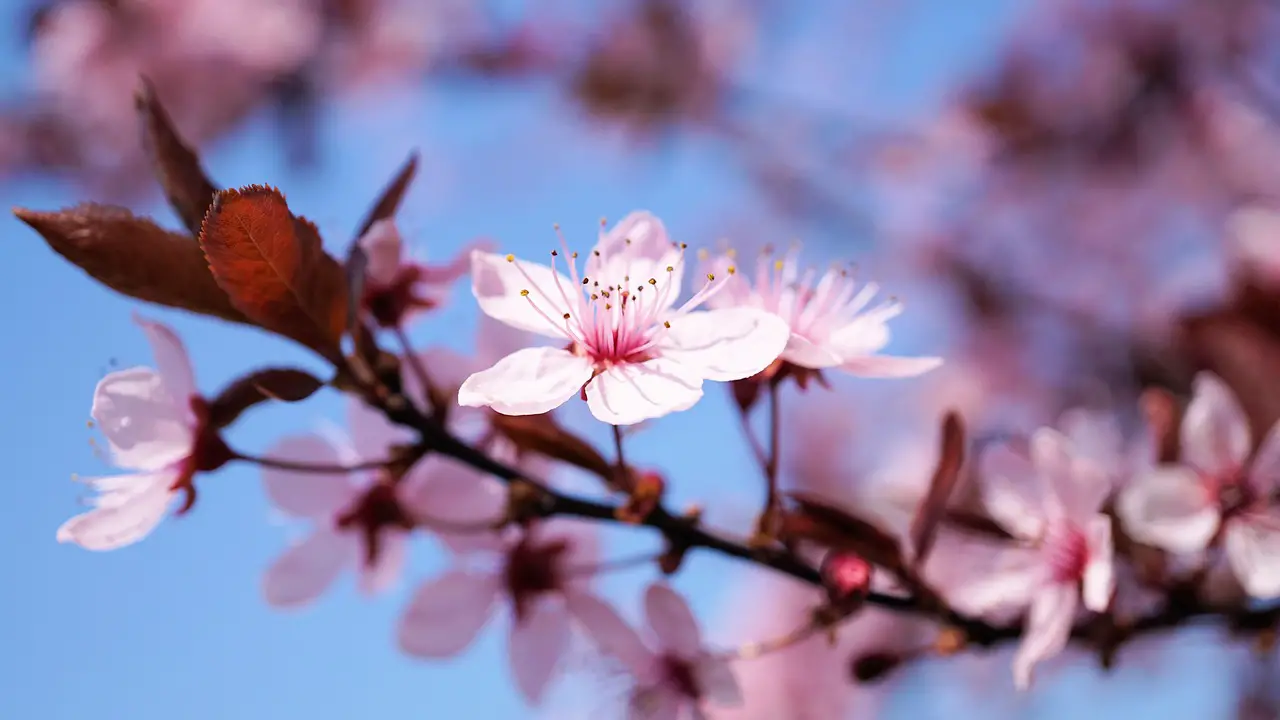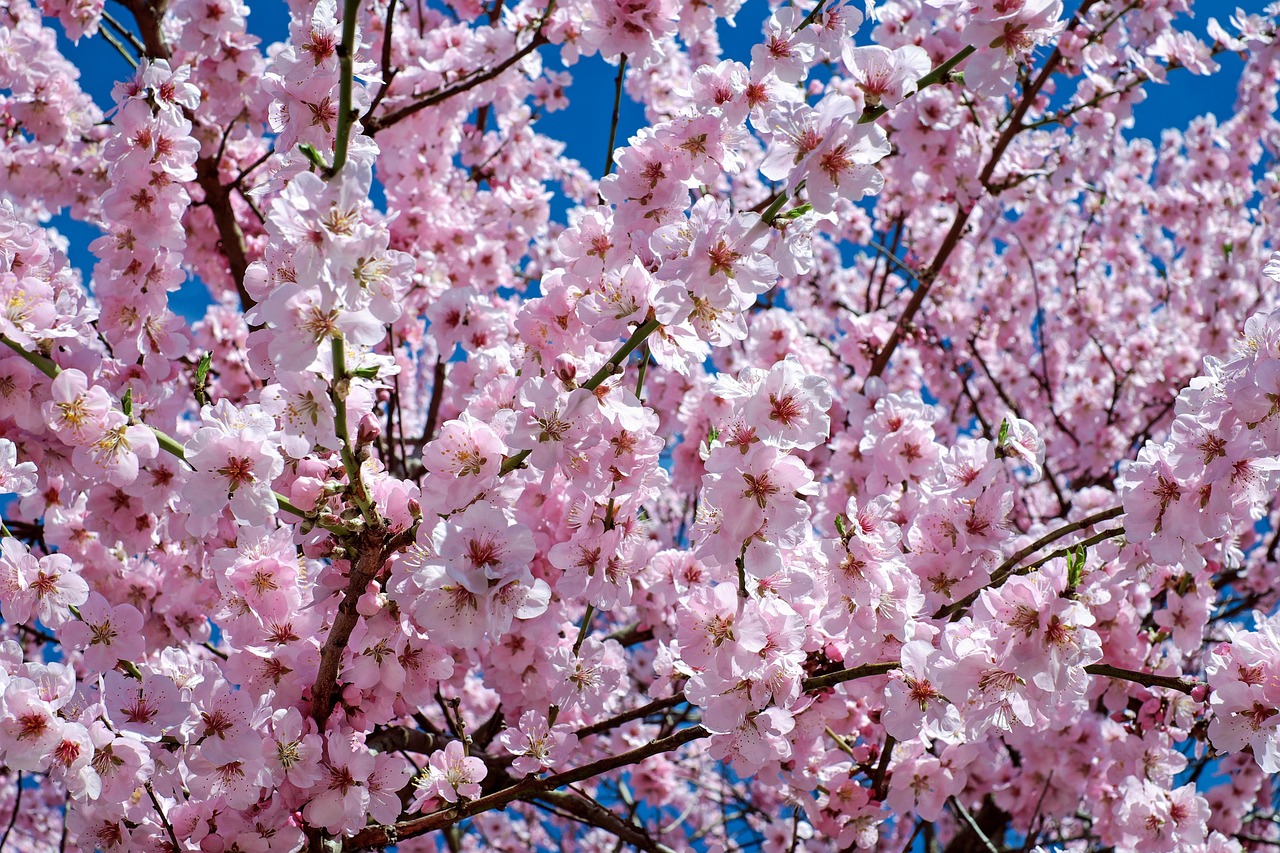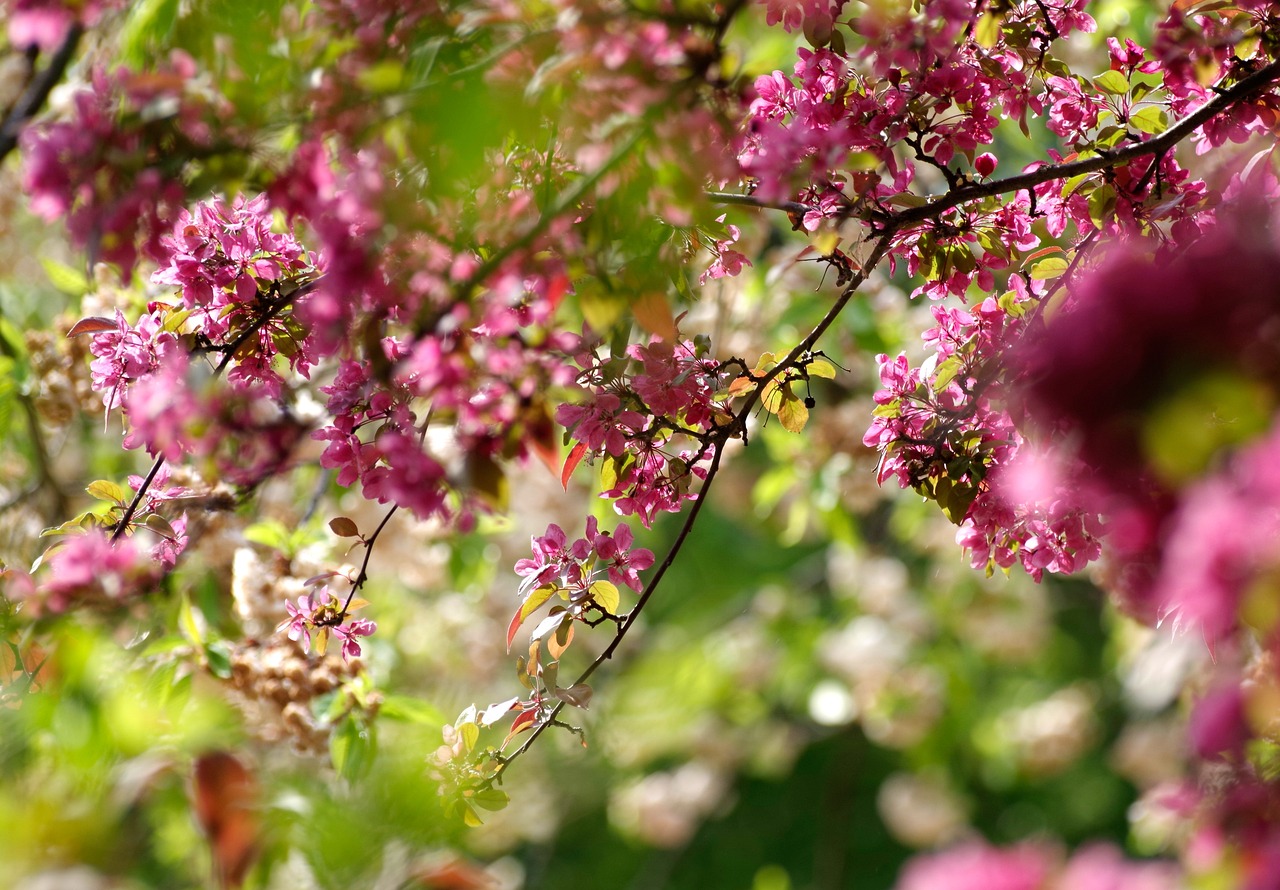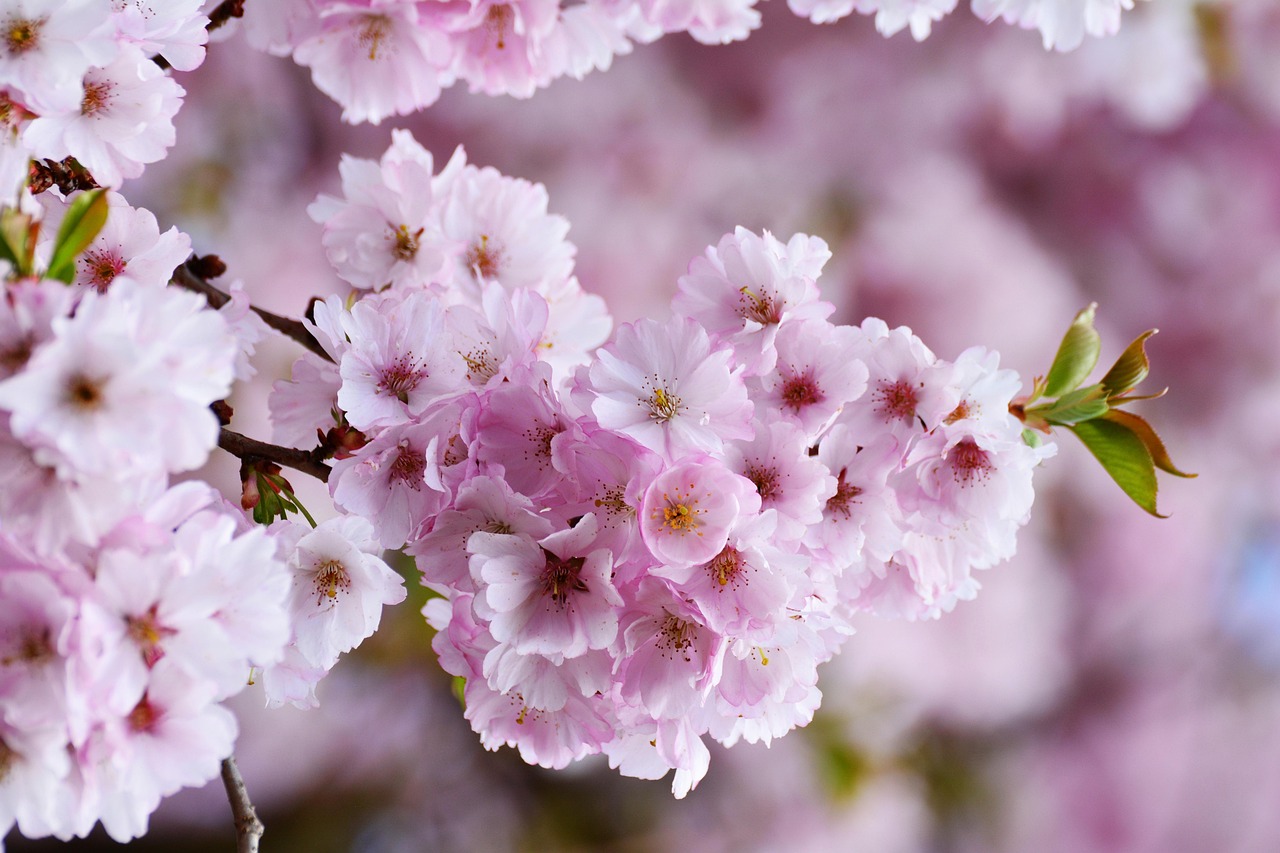Pruning cherry trees effectively can enhance their beauty and health while attracting beneficial pollinators. Proper pruning techniques ensure strong growth and abundant flowering, which are crucial for enticing bees and other pollinators to your garden.
Cherry trees are not only a delightful addition to any garden but also play a vital role in supporting local ecosystems. Their blossoms provide essential nectar and pollen for various pollinators, including bees, butterflies, and birds. To maximize the benefits of your cherry trees, understanding the art of pruning is key. Pruning helps shape the tree, encourages better air circulation, and promotes sunlight penetration to the inner branches.

Pollinator attraction is particularly important for fruit-bearing trees like cherries. When pollinators visit the flowers, they transfer pollen from one blossom to another, which is essential for fruit production. A well-pruned cherry tree can produce more flowers, thus increasing the chances of successful pollination.
Understanding Cherry Tree Pruning
Cherry trees can be divided into two main categories: sweet cherries (Prunus avium) and sour cherries (Prunus cerasus). Both types benefit from specific pruning techniques to enhance their growth and flowering capacity. The timing, method, and tools used for pruning can significantly affect the health of the tree and its ability to attract pollinators.
Pruning is typically performed during the dormant season, which is usually late winter or early spring before new growth begins. This timing helps minimize stress on the tree and reduces the risk of disease. However, light pruning can also be done immediately after flowering to remove any dead or damaged branches.

Here are some important tips for pruning cherry trees:
- Use clean, sharp tools to make precise cuts.
- Aim for a balanced shape to ensure even sunlight exposure.
- Remove any dead or diseased wood to promote overall health.
- Thin out crowded branches to improve air circulation.
- Focus on maintaining a central leader to guide upward growth.
When done correctly, pruning not only enhances the structure of the tree but also encourages a profusion of blossoms that attract pollinators. The following table summarizes essential information regarding the best practices for pruning cherry trees.
| Pruning Practice | Recommended Timing | Benefits |
|---|---|---|
| Dormant Pruning | Late Winter – Early Spring | Encourages strong growth and reduces disease risk. |
| Light Post-Flowering Pruning | Immediately After Flowering | Removes dead or damaged branches; lessens stress. |
| Thinning | During Dormancy | Improves air circulation and sunlight penetration. |
Once you have a clear understanding of the timing and techniques for pruning cherry trees, it is essential to consider what specific goals you have in mind. If your primary objective is to attract pollinators, you may want to focus on creating an open canopy that allows sunlight to reach all parts of the tree. This will encourage more blossoms, leading to a higher likelihood of attracting bees and other beneficial insects.

In addition to proper pruning, consider planting companion flowers nearby. Flowers such as lavender, sunflowers, and zinnias can draw in pollinators while enhancing the aesthetics of your garden. The combination of flowering plants with well-pruned cherry trees creates a vibrant ecosystem that benefits both plants and wildlife.
Another aspect to consider is the overall health of your cherry tree. Regularly checking for pests and diseases is vital. Maintaining a healthy tree will naturally attract more pollinators. You should monitor for signs such as discoloration of leaves or unusual spots, which could indicate issues that need to be addressed promptly.
In summary, effective pruning of cherry trees not only shapes their growth but also plays a significant role in enhancing their attractiveness to pollinators. By implementing proper techniques and considering the surrounding environment, you can create a thriving garden that supports both your cherry trees and the vital pollinator population.
Tools and Techniques for Pruning Cherry Trees
To effectively prune cherry trees, it is essential to use the right tools and techniques. The tools you select can significantly impact the quality of your cuts and the overall health of the tree. Here are some commonly used tools for pruning:

- Bypass Pruners: Ideal for cutting small branches and stems.
- Loppers: Useful for thicker branches that are too large for hand pruners.
- Saw: A pruning saw is necessary for larger limbs that require a more robust tool.
- Gloves: Protect your hands while working to avoid injuries.
- Safety Goggles: Essential for protecting your eyes from flying debris.
When pruning, it is vital to focus on making clean cuts. Jagged cuts can lead to disease and attract pests. Here are some key techniques to follow:
Making the Right Cuts
Understanding how to make the right cuts is crucial. Here are some important guidelines:
- Avoid Topping: Never cut off the top of the cherry tree. This practice can lead to weak growth and increase the risk of pests and diseases.
- Cut at a 45-Degree Angle: This angle allows water to run off the cut surface, reducing the risk of rot.
- Leave Branch Collars: When cutting branches, leave the branch collar intact. This area contains cells that help heal the cut.
- Remove Suckers: Suckers are vigorous shoots that grow from the base or along the trunk. They should be pruned away to focus energy on the main branches.
Pruning Techniques for Different Cherry Tree Varieties
Different varieties of cherry trees may require specific pruning techniques. Understanding these differences can help optimize growth and attract pollinators effectively.
Sweet Cherry Trees (Prunus avium)
Sweet cherry trees typically have a more open canopy that allows sunlight to penetrate through the branches. Pruning should focus on maintaining this openness while encouraging upward growth.
- Thin Out Crowded Branches: Remove any overlapping or crowded branches to ensure light reaches all parts of the tree.
- Shorten Long Branches: If a branch grows too long, consider shortening it to encourage lateral growth.
Sour Cherry Trees (Prunus cerasus)
Sour cherry trees tend to have a more bushy appearance. Pruning should aim to open up the center of the tree to improve air circulation and light exposure.
- Remove Inner Branches: Cut any branches that grow inward towards the center of the tree.
- Encourage Stronger Framework: Focus on thinning out weaker branches to promote a robust structure.
Timing Your Pruning for Maximum Effectiveness
The timing of your pruning efforts can significantly impact the health of your cherry trees and their ability to attract pollinators. While late winter or early spring is ideal for most pruning activities, there are additional considerations depending on the specific goals you want to achieve.
| Timing | Type of Pruning | Purpose |
|---|---|---|
| Late Winter – Early Spring | Dormant Pruning | Encourages strong growth before the growing season starts. |
| Immediately After Flowering | Light Pruning | Removes any dead or diseased branches. |
| Summer | Summer Pruning | Controls growth and reduces tree size if necessary. |
Summer pruning can also be beneficial for cherry trees. This technique helps control excessive growth while encouraging fruit production. However, it should be done carefully as excessive summer pruning can stress the tree.
Encouraging Pollinator Presence Post-Pruning
After pruning, it is essential to implement strategies that encourage pollinators to visit your cherry trees. Planting a diverse array of flowering plants nearby can create a welcoming environment for bees, butterflies, and other beneficial insects.
Additionally, consider creating habitats that support pollinator populations. Here are a few ideas:
- Nesting Sites: Leave small areas of bare soil where ground-nesting bees can thrive.
- Diverse Plantings: Include a mix of flowering plants that bloom at different times throughout the growing season.
- Avoid Pesticides: Minimize or eliminate pesticide use, as these chemicals can harm pollinators.
The combination of proper pruning techniques, suitable planting choices, and supportive habitats will create an ideal environment for pollinators. This holistic approach maximizes the benefits of your cherry trees while fostering biodiversity in your garden.
Common Pests and Diseases Affecting Cherry Trees
Maintaining the health of your cherry trees is essential for attracting pollinators and ensuring fruitful harvests. Unfortunately, cherry trees can be susceptible to a variety of pests and diseases. Recognizing these threats early allows for prompt action, which can help protect your trees and their ability to flourish.
Common Pests
Pests can significantly impact the health of cherry trees. Here are some of the most common pests you might encounter:
- Cherry Fruit Fly: These flies lay eggs in the fruit, causing it to rot and fall prematurely. Regular monitoring and traps can help manage their population.
- Aphids: Small, sap-sucking insects that can weaken trees and lead to poor growth. They also excrete honeydew, which can attract other pests.
- Japanese Beetles: These beetles feed on leaves and flowers, leading to reduced fruit production. Handpicking or using traps can help control their numbers.
- Spider Mites: Tiny pests that thrive in hot, dry conditions. They can cause leaf discoloration and webbing. Increasing humidity can help deter them.
Common Diseases
In addition to pests, diseases can afflict cherry trees. Here are some common diseases to watch for:
- Brown Rot: A fungal disease that affects blossoms and fruit, causing them to rot. Proper sanitation and timely removal of infected fruit can help manage this disease.
- Canker Diseases: These are caused by various fungi and can lead to dead patches on branches. Pruning out affected areas is crucial to prevent spread.
- Powdery Mildew: A fungal infection that presents as white powder on leaves. Improving air circulation and avoiding overhead watering can reduce incidence.
- Leaf Spot: Various fungi or bacteria can cause leaf spots, resulting in premature leaf drop. Affected leaves should be removed from the area.
Managing Pests and Diseases Effectively
To ensure your cherry trees remain healthy and attractive to pollinators, it is essential to implement effective management strategies for pests and diseases. Here are some approaches:
Cultural Practices
Cultural practices play a vital role in the health of cherry trees. Consider the following:
- Proper Watering: Ensure consistent watering, especially during dry spells, to keep trees healthy and resilient against pests.
- Mulching: Applying organic mulch around the base of trees helps retain moisture and suppress weeds that can harbor pests.
- Crop Rotation: If you have multiple types of fruit trees, rotating their locations can help reduce pest populations.
Biological Control Methods
Utilizing beneficial insects can be an effective way to manage pests without resorting to chemicals. Here are some beneficial insects to consider:
- Lacewings: Their larvae feed on aphids and other soft-bodied insects.
- Ladybugs: Known for their appetite for aphids, ladybugs can help keep populations in check.
- Predatory Wasps: These wasps target various pests, including caterpillars and beetles.
Chemical Control Options
If pest populations become overwhelming, chemical control may be necessary. However, it is important to choose products that are safe for pollinators. Consider the following:
- Insecticidal Soap: Effective against soft-bodied insects like aphids, it breaks down quickly and is less harmful to beneficial insects.
- Neem Oil: A natural pesticide that disrupts the life cycle of various pests without harming pollinators when used correctly.
- Bacterial Insecticides: Products containing Bacillus thuringiensis (Bt) target specific caterpillars while being safe for other wildlife.
The Role of Soil Health in Cherry Tree Growth
The health of the soil where cherry trees are planted plays a critical role in their growth and resilience against pests and diseases. Healthy soil promotes strong root systems, enabling trees to access nutrients and water effectively.
Testing Soil Quality
Conducting a soil test is a good first step to assess nutrient levels and pH balance. This information will guide you in making necessary amendments. The ideal pH range for cherry trees is typically between 6.0 and 7.0.
| Nutrient | Ideal Level | Function |
|---|---|---|
| Nitrogen (N) | 40-80 ppm | Promotes healthy leaf growth. |
| Phosphorus (P) | 20-40 ppm | Supports root development and flowering. |
| Potassium (K) | 100-200 ppm | Aids in fruit quality and disease resistance. |
Improving Soil Health
To enhance soil health, consider implementing the following practices:
- Add Organic Matter: Incorporating compost or well-rotted manure improves soil structure and nutrient content.
- Avoid Compaction: Limit foot traffic around the base of trees to prevent soil compaction, which can hinder root growth.
- Cover Crops: Planting cover crops during the off-season can improve soil health by adding nutrients and preventing erosion.
The integration of soil health management with effective pest control measures creates a solid foundation for thriving cherry trees that attract pollinators while ensuring a bountiful harvest.
Enhancing Cherry Tree Growth Through Companion Planting
Companion planting plays a vital role in promoting the health and productivity of cherry trees. By strategically selecting neighboring plants, you can create a more biodiverse and resilient garden environment. Certain plants can improve soil quality, attract beneficial insects, and even deter harmful pests.
Beneficial Companion Plants
When choosing companion plants for cherry trees, consider those that can enhance pollinator attraction and support overall tree health. Here are some effective options:
- Herbs: Plants like basil, oregano, and thyme can attract pollinators while providing culinary benefits. Their aromatic foliage also helps repel certain pests.
- Flowers: Brightly colored flowers such as marigolds, nasturtiums, and borage not only draw in bees but can also act as trap crops for pests.
- Legumes: Beans and peas improve soil nitrogen levels through their root nodules, benefiting cherry trees by enhancing nutrient availability.
- Comfrey: This deep-rooted plant can bring up nutrients from the soil and act as a natural mulch when its leaves are chopped and left around the base of the tree.
Creating a Diverse Ecosystem
Incorporating a variety of plants into your garden fosters a balanced ecosystem that encourages beneficial wildlife. Here are some strategies to enhance biodiversity:
- Plant Native Species: Native plants are adapted to local conditions and attract native pollinators, which are crucial for successful cherry tree pollination.
- Provide Water Sources: A small water feature or birdbath can attract pollinators and other beneficial wildlife to your garden.
- Create Habitat Areas: Leave areas of your garden undisturbed to provide shelter for insects and small wildlife.
Maintaining Your Cherry Tree’s Health Throughout the Seasons
Seasonal care is essential to ensure your cherry trees remain healthy and productive. Different seasons require different maintenance tasks.
Spring Care
As the growing season begins, focus on the following activities:
- Monitor Blooming: Keep an eye on the flowering period to assess pollinator activity and ensure good fruit set.
- Fertilization: Apply a balanced fertilizer to support new growth, especially if soil tests indicate nutrient deficiencies.
- Pest Control: Begin scouting for early signs of pests or diseases and take necessary actions promptly.
Summer Care
During the summer months, maintaining tree health is crucial:
- Irrigation: Ensure adequate watering during dry spells, particularly for young trees.
- Pruning: Perform light summer pruning to maintain shape and remove any dead or diseased branches.
- Pest Monitoring: Continue monitoring for pests, as summer can bring increased insect activity.
Fall Care
As autumn approaches, prepare your cherry trees for winter:
- Harvesting: Gather ripe cherries carefully to avoid damaging the tree.
- Final Pruning: Conduct any necessary pruning before winter dormancy.
- Mulching: Apply mulch around the base of the tree to protect roots from frost and retain moisture.
Winter Care
The winter months require minimal intervention but still demand attention:
- Inspect Trees: Regularly check for any signs of damage from snow or ice.
- Avoid Heavy Foot Traffic: Stay off frozen ground around the tree to prevent soil compaction.
Conclusion
Pruning cherry trees effectively is crucial not only for their health but also for attracting beneficial pollinators. By implementing proper pruning techniques, maintaining soil health, managing pests and diseases, and utilizing companion planting strategies, gardeners can create thriving environments that support both cherry tree growth and local ecosystems. The holistic approach of integrating these practices will lead to vibrant, productive cherry trees that enhance the beauty of any garden while providing essential resources for pollinators. Ultimately, a well-cared-for cherry tree not only yields delicious fruits but also contributes positively to biodiversity in our landscapes.
